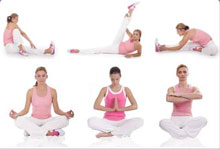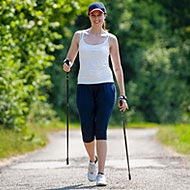Posture and Exercise - Two Sides Of The Same Coin
Growing up, we’ve all been given instructions of not slouching, standing straight, keeping your shoulders back and so on. And as children, we may have complied not really understanding the reason behind these directions.
People with good postures look confident and healthy, but apart from that it plays an important role in the way we move. Believe it or not, our bodies are built to move. Development and progression of technology has made us lazy in a way, of everything being created to be at our fingertips.
This results in lesser movements but the larger effect is displayed on our posture. Bone density decreases, muscles shorten, and shoulders get rolled forward, gradually weakening our posture.
So how does posture affect exercise? Shoulder joints are meant to be in line with hip joints, which in turn are in alignment with the knee joints, and the knee joint is in line with the ankle joint. Each set of joints is supposed to be horizontally parallel to the floor. If this posture is maintained, you are less likely to suffer from joint and muscle pains as the muscles pull on the bones appropriately. If your posture is compromised, the muscles end up pulling on the bones from various directions, resulting in improper joint movement. Incorrect postures overtime, can end up leaving you with pain in your muscles and joints.
If you exercise when your body is not aligned right, you may end up adding injury to injury. Your muscles are forced to pull from the bones in the wrong manner, and your joints start to take increased load due to this. Before beginning any form of exercise, it is important to understand what a right posture is, and work on correcting it. Yoga is one way of correcting postural problems, these asanas or poses help to decrease the tendency to slouch, increase body awareness as well as improve your posture. Some of these poses are:
- Tadasana or mountain pose - allows you to sense when your body is not in proper vertical alignment
- The cat-cow stretch - helps to discover the ideal neutral placement of your spine.
- The bridge pose - opens up the shoulders and chest, two areas which are often constricted in poor posture
- Yoga stretches at your desk - helps to relieve tension in the neck, and enhance good posture
- Standing-forward-bend pose - opens and relaxes the shoulders as well as stretches the hamstring
Practice yoga under the guidance of a certified yoga instructor before beginning on your own. Consult your doctor if you have any medical conditions prior to starting yoga.
Read more articles from the General Discussion Category.
 Find Pose
Find Pose

